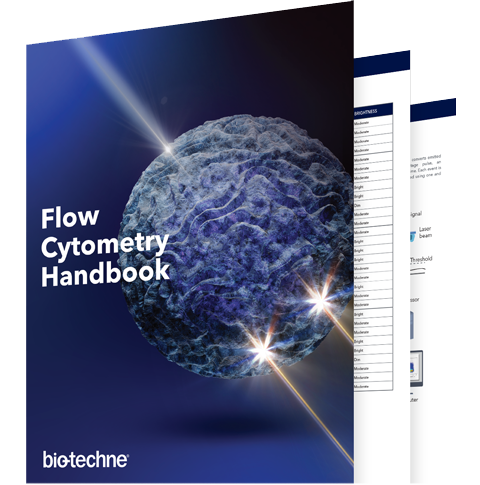Janelia Fluor® Dyes
Originally developed at the Janelia Research Campus, the Janelia Fluor® dyes have recently been made commercially available conjugated to antibodies or supplied as NHS esters for custom labeling. These bright, photostable dyes enable sensitive detection of cellular targets in IHC, ICC, and flow cytometry applications and are especially suited for live-cell imaging.
Janelia Fluor® Products
Janelia Fluor® Dyes
Janelia Fluor® Dyes
- Exceptionally bright, highly photostable
- Especially well-suited to live-cell imaging
- Ideal for Super Resolution Microscopy (SRM) including dSTORM and STED
- Suitable for use in confocal microscopy, IHC, ICC and flow cytometry
- Spectra Viewer tool available for multiplex experimental design
- Spontaneously Blinking Janelia Fluor® dyes, ideal for single-molecule localization microscopy (SMLM)
- Photoactivatable Janelia Fluor® dyes also available, compatible with photoactivated localization microscopy (PALM)
Janelia Fluor® Conjugated Antibodies
Janelia Fluor® Conjugated Antibodies
- We offer Janelia Fluor® conjugated primary and secondary antibodies: JF 549 Antibodies and JF 646 Antibodies
- Antibody custom conjugation service also available
Janelia Fluor® Based Cellular Stains
Janelia Fluor® Based Cellular Stains
Fluorogenic, enabling no-wash experiments, with bright, low noise signals, perfect for sensitive or low expression experiments.
We offer Janelia Fluor® based probes for staining cellular structures and organelles, including:
- Taxol Janelia Fluor® 646 for direct imaging of the microtubule cytoskeleton
- Hoechst Janelia Fluor® 646, a red-emitting DNA probe
- Pepstatin A Janelia Fluor® 526, to track and stain lysosomes
Janelia Fluor® dyes are available with a variety of reactive handles for biomolecule conjugation. Conjugation protocols are available as well as Custom Chemistry services for alternative reactive handles.

- "We have been using the JF secondary antibodies and like them a lot for IHC. As advertised, they seem to be at least a little brighter and more photostable than the Alexa 647 and Cy3 dyes we had been using. We will probably switch over to these completely going forward." - Steve Stowers, PhD, Assistant Professor, Montana State University
- "It’s a great antibody and great fluorophore by its signal sharpness and photo stability." - Anonymous
Human tonsil stained for aSMA (red; alpha-Smooth Muscle Actin Antibody [Janelia Fluor® 549] Catalog # NBP2-34522JF549) and counterstained with DAPI (blue).
Janelia Fluor® dyes are particularly useful for Super-Resolution microscopy including dSTORM (direct stochastic optical reconstruction microscopy) and STED (stimulated emission depletion) microscopy.
They are supplied with a range of reactive groups for biomolecular conjugation, including:
- Amine-Reactive
- Click-Reactive (azide and tetrazine)
- Free acid for onward chemistry
- Sulfhydryl-Reactive (Maleimide)
Conjugation protocols for Janelia Fluor® dyes are available.
All amine reactive dyes can be converted to relevant substrates for use in self-labeling tag systems such as HaloTag® and SNAP-tag®, facilitating visualization and single molecule-tracking of intracellular targets in live cells.
SNAP-tag is a trademark of New England BioLabs, Inc and HaloTag is a trademark of Promega Corporation.
Janelia Fluor is a registered trademark of Howard Hughes Medical Institute.

Cardiac Tissue labelled with Janelia Fluor® Dyes. Images acquired using dSTORM.
All images kindly provided by Professor. C. Soeller, University of Exeter; images taken by Alex Clowsley and Anna Meletiou.
Fluorescent Dyes and Probes Brochure
This product guide showcases our range and gives background on the use of Fluorescent Dyes and Probes.
Immunohistochemistry (IHC) Handbook
This recently updated handbook offers a comprehensive introduction to IHC.
-
Grimm et al. (2015) A general method to improve fluorophores for live-cell and single-molecule microscopy Nat.Methods 244:12. PMID: 25599551.
-
Grimm et al. (2016) Bright photoactivatable fluorophores for single-molecule imaging Nat.Methods 13:985. PMID: 27776112.
-
Grimm et al. (2017) A general method to fine-tune fluorophores for live-cell and in vivo imaging Nat.Methods 14:987. PMID: 28869757.
-
Grimm et al. (2017) General Synthetic Method for Si-Fluoresceins and Si-Rhodamines ACS Cent.Sci. 3:975. PMID: 28979939.
-
Lavis et al. (2017) Chemistry Is Dead. Long Live Chemistry! Biochemistry 56:5165. PMID: 28704030.
-
Tsai et al. (2017) Nuclear microenvironments modulate transcription from low-affinity enhancers Elife 6:e28975. PMID: 29095143.
-
Yadav et al. (2017) Bright Dyes Bring Biology into Focus ACS Cent.Sci. 3:920. PMID: 28979930.
-
Zhang et al. (2017) Optogenetic control of kinetochore function Nat.Chem.Biol. 1096:13. PMID: 28805800.






